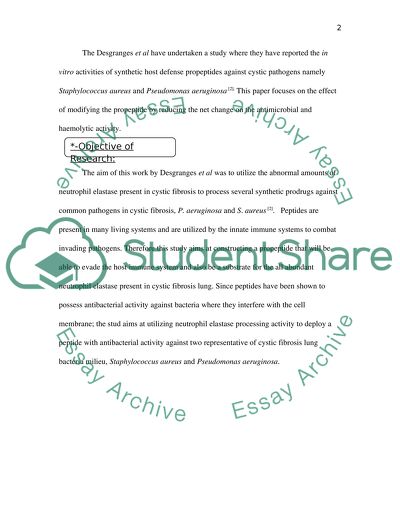Cite this document
(In Vitro Activities of Synthetic Host Defense Propeptides Research Paper, n.d.)
In Vitro Activities of Synthetic Host Defense Propeptides Research Paper. Retrieved from https://studentshare.org/biology/1595247-report-about-this-paper-in-vitro-activities-of-synthetic-host-defense-propeptides-processed-by-neutrophil-elastase-against-cystic-fibrosis-pathogens
In Vitro Activities of Synthetic Host Defense Propeptides Research Paper. Retrieved from https://studentshare.org/biology/1595247-report-about-this-paper-in-vitro-activities-of-synthetic-host-defense-propeptides-processed-by-neutrophil-elastase-against-cystic-fibrosis-pathogens
(In Vitro Activities of Synthetic Host Defense Propeptides Research Paper)
In Vitro Activities of Synthetic Host Defense Propeptides Research Paper. https://studentshare.org/biology/1595247-report-about-this-paper-in-vitro-activities-of-synthetic-host-defense-propeptides-processed-by-neutrophil-elastase-against-cystic-fibrosis-pathogens.
In Vitro Activities of Synthetic Host Defense Propeptides Research Paper. https://studentshare.org/biology/1595247-report-about-this-paper-in-vitro-activities-of-synthetic-host-defense-propeptides-processed-by-neutrophil-elastase-against-cystic-fibrosis-pathogens.
“In Vitro Activities of Synthetic Host Defense Propeptides Research Paper”, n.d. https://studentshare.org/biology/1595247-report-about-this-paper-in-vitro-activities-of-synthetic-host-defense-propeptides-processed-by-neutrophil-elastase-against-cystic-fibrosis-pathogens.


